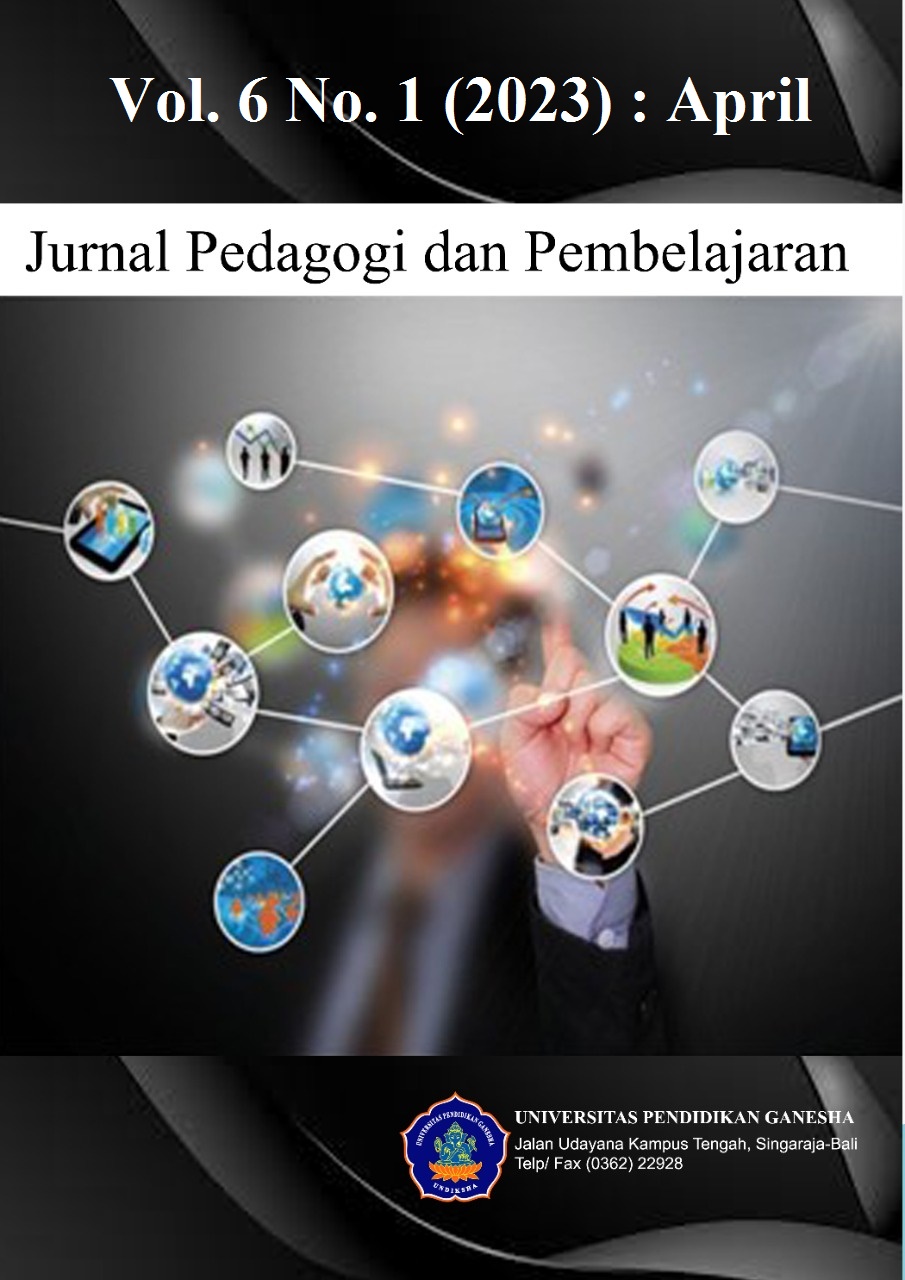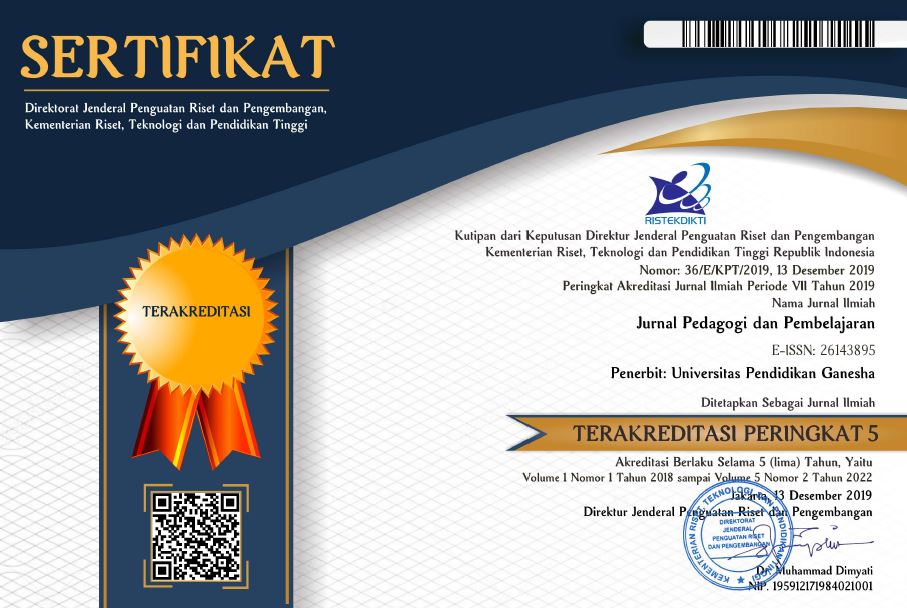Implementation of Children's Naturalistic Loose-parts in Developing Creativity
DOI:
https://doi.org/10.23887/jp2.v6i1.54973Keywords:
Early Chidhood, Creativity, Loose-part, NaturalisticAbstract
The development of early childhood creativity needs to get the right stimulation so that it develops optimally. This study aims to analyze the potential of naturalistic loose-part in developing early childhood creativity and the use of naturalistic loose-part media in developing creativity in children. The method used in this research is a phenomenological qualitative approach that relates to the findings around. The subjects of this study were class teachers and 18 children aged 5-6 years. Data collection techniques by observing, interviewing, and documentation. Data analysis by doing data reduction, presentation, and data verification. The results of this study indicate that the use of naturalistic loose-part media can help develop creativity in early childhood. It is shown by the behavior of active, enthusiastic, and imaginative children participating in teaching and learning activities. Naturalistic loose-part media is demonstrated using wood, stone, twigs, sand, and various objects around it. The results of this study have implications related to children's creativity to encourage teachers to use loose-part objects in learning.
Downloads
Published
How to Cite
Issue
Section
License
Copyright (c) 2023 rosi tunas

This work is licensed under a Creative Commons Attribution-ShareAlike 4.0 International License.
Authors who publish with Jurnal Pedagogi dan Pembelajaran agree to the following terms:- Authors retain copyright and grant the journal the right of first publication with the work simultaneously licensed under a Creative Commons Attribution License (CC BY-SA 4.0) that allows others to share the work with an acknowledgment of the work's authorship and initial publication in this journal
- Authors are able to enter into separate, additional contractual arrangements for the non-exclusive distribution of the journal's published version of the work (e.g., post it to an institutional repository or publish it in a book), with an acknowledgment of its initial publication in this journal.
- Authors are permitted and encouraged to post their work online (e.g., in institutional repositories or on their website) prior to and during the submission process, as it can lead to productive exchanges, as well as earlier and greater citation of published work. (See The Effect of Open Access)













